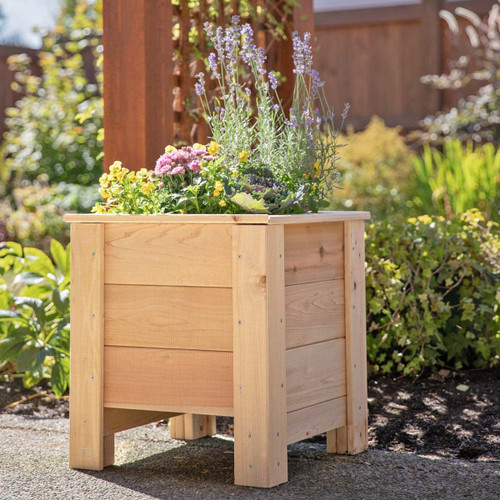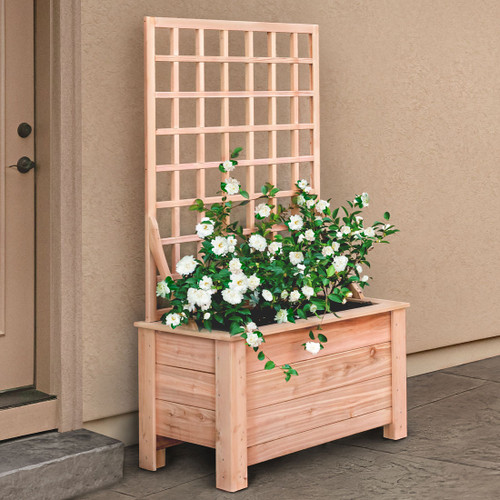Planter and potting table basics
For gardening enthusiasts, having the right tools and equipment can make all the difference. Planters and potting tables are great assets for both novice and experienced gardeners, providing functionality and style to your outdoor space. Planters elevate your flowers and vegetables, making them more accessible. Potting tables provide a handy workspace where you can sow and pot up seedlings, mix growing mediums, and propagate plants from your garden. This guide aims to help you understand the different products and materials associated with planters and potting tables.
Introduction to planter boxes
Planter boxes are versatile containers that allow you to cultivate a variety of plants, from flowers to vegetables, in a controlled environment. These boxes are ideal for small spaces, patios, or areas with poor soil quality. Given their integrated bottoms and smaller sizes, they can usually be moved, enabling you to rearrange your garden as needed. Planter boxes are usually raised a short distance off the ground, on short legs, making them a lower option when it comes to planters.
Raised planter boxes take gardening to the next level — literally! Elevated to waist level, these planters reduce strain on your back and knees while improving drainage and soil aeration. Raised planter boxes are perfect for growing herbs, vegetables, or any plant that benefits from a well-drained environment. They’re especially good for anyone who struggles with bending or sitting or who simply wants the ease of harvesting closer to eye level.
Best material for planter boxes
When selecting raised planter boxes, the choice of material plays a crucial role in determining the durability, aesthetics, and overall functionality of your garden. Common materials used for raised planter boxes include wood, metal, and composite materials, each offering unique benefits to suit different gardening needs.
Wood is one of the most popular materials for raised planter boxes due to its natural appearance and versatility. Cedar and redwood are particularly favored because of their natural resistance to rot and insects. These woods weather beautifully over time, blending seamlessly with garden landscapes. Since untreated wood may degrade more quickly, consider adding a non-toxic, protective sealant to extend the life of your wooden planter box.
Metal raised planter boxes, often made from galvanized steel or corten steel, offer a sleek, modern look that is both durable and low-maintenance. Metal planters are highly resistant to pests and weather conditions, making them ideal for long-term use. They retain heat well, which can be beneficial for certain plants in cooler climates, but they may require some insulation or lining to protect plant roots from extreme temperatures in hotter climes.
Plastic planter boxes made from high-quality, food-grade, UV-resistant plastic are an excellent choice for those seeking a durable and safe option for their garden. These planter boxes are typically BPA, BPS, and PVC-free, ensuring that harmful chemicals do not leach into the soil or your plants. The UV-resistant properties of the plastic help protect the planter from sun damage, preventing it from cracking or fading over time. This makes them a low-maintenance solution for gardeners who want the convenience of lightweight, portable planters without compromising on safety or environmental impact.
Introduction to potting tables and potting benches
Potting tables, also known as potting bench tables, are indispensable for gardeners who enjoy getting their hands dirty. These tables provide a dedicated workspace for potting plants, mixing soil, and organizing gardening tools. With built-in storage and sturdy surfaces, garden potting tables keep your outdoor space tidy and efficient.
When working in the garden, convenience is key. Outdoor garden potting tables are designed to withstand the elements, making them durable and long-lasting. These outdoor planter tables offer ample space for all your gardening activities, whether you're repotting plants, preparing seedlings, or arranging your planter boxes.
Choosing the right material for your potting bench
The material used in potting benches significantly impacts their durability, maintenance needs, and overall aesthetics. Common materials for potting benches include wood, metal, and a combination of both, each with its distinct advantages.
Wood is a traditional and popular material for potting benches due to its natural appearance and versatility. Cedar and teak are commonly used woods because of their natural resistance to rot, insects, and moisture. Wooden potting benches often feature a warm, rustic look that complements outdoor spaces. However, to ensure longevity, especially in outdoor settings, it’s important to choose wood that is treated or naturally resistant to weather conditions. Regular maintenance, such as sealing or staining, can help protect wooden potting benches from the elements, keeping them in good condition for years.
Metal potting benches, often crafted from materials like galvanized steel or aluminum, offer a sleek, modern alternative to wood. These benches are highly durable, resistant to rust, and require minimal maintenance. Metal potting benches are ideal for gardeners who need a sturdy, long-lasting workspace that can withstand the rigors of outdoor use. They often feature clean lines and a contemporary design, making them a great fit for modern garden aesthetics. Additionally, metal surfaces are easy to clean, which is particularly useful when dealing with soil, water, and fertilizers.






